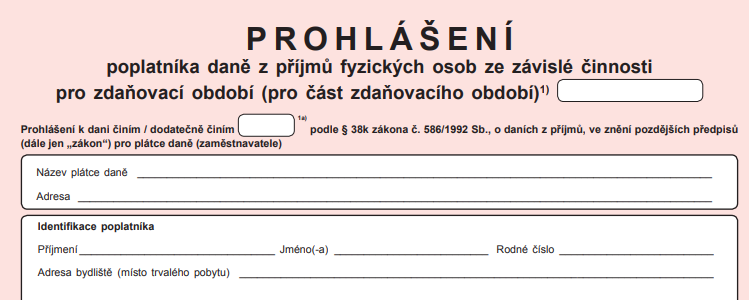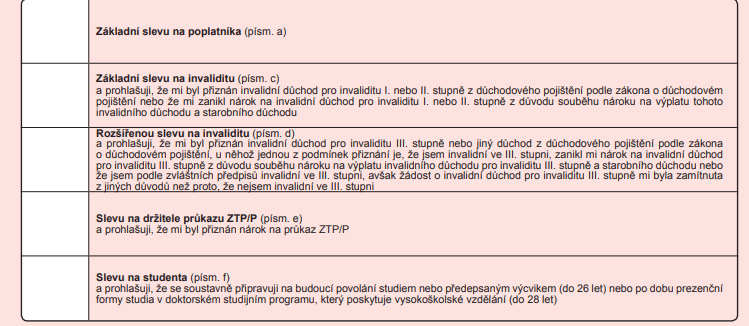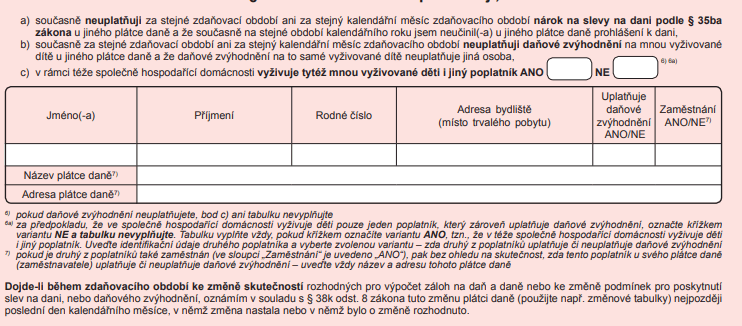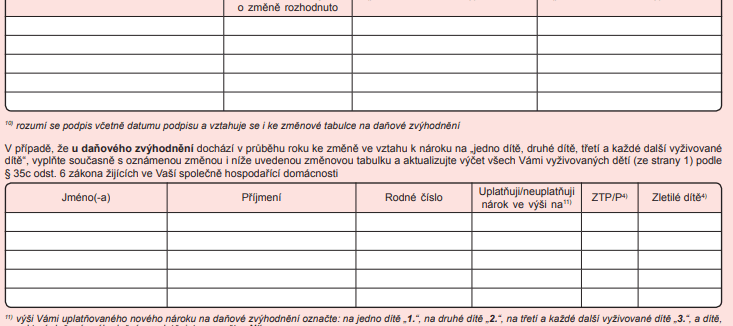What is an income taxpayer declaration
The Personal Income Taxpayer Declaration, often referred to as the “pink declaration”, is a mandatory document that employees must complete and submit to their employer each year. This declaration is used to determine how income tax is paid. After all, it is also in their interest as it allows them to benefit from tax relief.
Tip for article
Tip: Tax is not only paid on income, but also on real estate. Read our summary on property tax. Find out how much it is, when it is due and how to apply for it.
The basic prerequisite for claiming tax credits via the pink declaration is that the employee can only sign the taxpayer declaration with one employer. It does not matter whether he/she works full-time or part-time or whether he/she is employed by the employer under a performance or employment agreement.
The taxpayer’s declaration is filed once a year, normally at the beginning of the calendar year by 15 February or, if you change jobs, within 30 days of starting your new job. If changes occur during the year that would affect the amount of tax credits claimed (for example, the birth of a child), the employee should file an updated statement, again within 30 days of the event (birth of a child).
Are you solving a similar problem?
Not sure how to do your taxes properly so you don't get it wrong?
We can help you navigate the law, whether it’s dealing with a specific tax situation, preparing for an audit by the tax authority or defending yourself in court.
I have a question
- When you order, you know what you will get and how much it will cost.
- We handle everything online or in person at one of our 6 offices.
- We handle 8 out of 10 requests within 2 working days.
- We have specialists for every field of law.
Pink slips with two employers
As we have already announced, the income taxpayer’s declaration can only be signed with one employer. So what are the risks if you sign it with more than one employer?
If you sign a pink declaration with two or even more employers, tax credits are incorrectly claimed, resulting in an underpayment of income tax. In the Czech Republic, the principle is that tax credits can only be claimed once and from one employer, typically the one with whom the employee has his/her main employment relationship.
Therefore, if your employer discovers that you have signed the taxpayer’s declaration twice, they must deduct from your wages an amount corresponding to the difference in tax. However, if he has already filed a tax return, then he must notify the taxpayer, i.e. you, of the debt. Once the tax office discovers that you have claimed tax credits from more than one employer, it will claim additional tax for the period when the credits were incorrectly claimed. In addition to the additional tax, you may also be liable for a penalty.
Who completes the taxpayer declaration
The pinkdeclaration is completed by all employees. It does not matter if they are also students or pensioners. Similarly, sole traders who are also employees complete the taxpayer declaration. However, their employer may not sign their annual tax statement. They must arrange this themselves when they file their tax return.
Tip for article
Tip: Trade or job? How about trying both? What are the advantages of such a combination and what can stand in your way of doing business? We’ll give you some advice in our next article.
How to fill in the income tax declaration
Basic information
The first field to fill in is the tax period. This is the year for which you are making the declaration. Only fill in the next box ‘I am making an additional declaration’ if you are making an additional declaration. In this case, you will write XD in it.
In the first table you need to fill in the name of the taxpayer and his address. The taxpayer is your employer, so fill in the full name of the company (e.g. Available Advocate s.r.o.). Similarly, fill in the exact address of the company’s registered office (e.g. V Jama 699/1, 110 00 Prague 1 – Nové město)
Identification data
In the table called Taxpayer Identification, you fill in your first name, last name, birth number and address of your permanent residence. In case you do not have Czech nationality, you also fill in the second part of the table, i.e. “Tax non-resident of the Czech Republic will fill in further“. Use your passport or ID card issued in your country to fill in the details of the taxpayer’s identity document.
Tax rebates
The second table includes all the possible tax credits you can claim. Here you tick the Xs for the discounts that apply to you. Or XD if you are claiming them retrospectively.
Child tax credit
This section relates to the child tax credit. However, you must meet several conditions to qualify for Child Tax Credit :
- You must have a dependent child living in the same household as you. A dependent child in this case means your own biological child, an adopted child, a child in foster care even after the end of foster care due to majority or legal capacity, a stepchild and a grandchild whose parents do not have income to claim the tax credit.
- The benefit can be claimed up to the child’s 18th birthday if he or she is no longer in education or up to the child’s 26th birthday if he or she is still in education.
- The child tax credit can only be claimed by one parent at a time. For this reason, the parent who does not claim the benefit must provide a certificate stating that the tax credit has not been claimed. If this parent is not an employee, then he or she must submit an affidavit of non-application of the child tax credit. Similarly, the absence of the other parent must be documented. This requires a certificate or affidavit.
If you meet all the conditions, then you can file. Here you fill in your child’s first name, surname, birth number and write whether or not you apply the discount (yes/no). If your child is a PWD/P, then tick this box with an X. If your child is over 18 years old but still studying, tick the ‘Adult child’ column with an X. However, you will also need to provide proof of your child’s studies.
Other parent of a dependent child
Here you first tick yes or no. Yes if you share a household with another taxpayer who is supporting your children. If you fill in yes, you must also fill in the table below. This is where you give the name, surname, birth number and permanent address of the other person (parent). And you fill in yes or no depending on whether that person claims the benefit.
Then in the last column you fill in yes or no again depending on whether the other person is employed. In the next row, you fill in the name of the company where this person works and one row below that the address of this company.
Signature and date
In the signature section, write your signature and the date of signature in the column “Taxpayer’sdeclaration”. You select the line depending on whether you are filing the declaration for the tax year indicated or subsequently for the tax year indicated.
Changes in entitlement to discounts or allowances
The last change section only applies to you if you have changes during the year that affect your taxpayer declaration and tax credits. This could be, for example, the birth of a child, leaving education or developing a disability.
In these cases, you need to fill in what type of change it is and in what month the change was decided or occurred (for example, a decision may have been made to grant disability while the birth of a child may have occurred). In the third column, add your signature and the date of signature. If the change concerns dependent children, also use the table below to add your child’s details.











